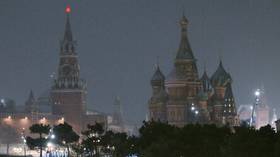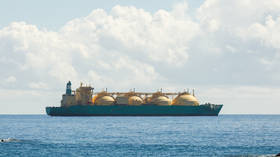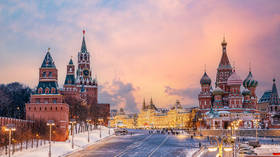US makes first-ever declaration of water shortage in Lake Mead & lower Colorado River Basin, signaling supply cuts to Southwest
The US federal government declared an unprecedented water shortage in Lake Mead, the country’s biggest reservoir, and the lower Colorado River Basin, triggering rationing among users downstream amid an historically bad drought.
The Bureau of Reclamation made the announcement, its first ever, on Monday, saying that extremely dry conditions had left water storage in the Colorado River system at about 40% of capacity, down 49% from a year ago. Water levels in Lake Mead are forecast to fall nine feet below the point at which a shortage determination is made by January, the bureau said.
As a result, the lake will be operated in a so-called Level 1 shortage condition for the first time ever, necessitating cuts to water allocations for Arizona, Nevada and Mexico. Supplies to Arizona will be reduced by 18%, while Nevada and Mexico will see 7% and 5% cuts, respectively.
Low water levels at Lake Mead prompted the federal government to issue a water shortage declaration on the Colorado River, the source of most of our drinking water.💧Southern Nevada will have to take less water from Lake Mead beginning Jan. 2022. 👀➡️ https://t.co/rzqQJ0Ye8ypic.twitter.com/6GTdOjexCk
— City of Las Vegas (@CityOfLasVegas) August 16, 2021
Lake Mead helps supply water to more than 25 million Americans in a region with a rapidly growing population, including Arizona, Nevada and part of California. Water levels in the gigantic reservoir slid to 1,071.6 feet above sea level in June, leaving it just 37% full. The water line has dropped about 140 feet in the past two decades. The Colorado River feeds the lake, and it’s supplies are strained by overuse even under normal weather conditions.
“Like much of the West and across our connected basins, the Colorado River is facing unprecedented and accelerating challenges,” said Tanya Trujillo, assistant US secretary for water and science. “The only way to address these challenges and climate change is to utilize the best available science and to work cooperatively across the landscapes and communities that rely on the Colorado River.”
Also on rt.com Nevada bans GRASS to battle drought, outlaws 31% of Las Vegas turf as ‘non-functional’An inter-agency drought working group created by the Biden administration is working with states, Native American tribes, farmers and cities to cope with the crisis.
A Colorado River compact signed in 1922 governs water management affecting seven states, including Colorado, New Mexico, Utah and Wyoming. Much of the water is used for agriculture.
Radio host Lionel said the Lake Mead shortage is a sign of troubles to come. “Remember this: If you thought toilet paper shortages and long gas lines freak people out, wait until there’s no water,” he said.
The future currency of war will be water. Hydroimperialism. Remember this. If you thought toilet paper shortages and long gas lines freak people out, wait until there’s no water. Do you think I’m exaggerating? Do you think this is some conspiracy theory? https://t.co/PTjhPsdiSb
— 🇺🇸Lionel🇺🇸 (@LionelMedia) August 16, 2021
Hydroelectric turbines at the Hoover Dam, located on the Nevada-Arizona border, are fed by Lake Mead. In fact, the massive project’s construction, completed in 1935, created the lake by damming Colorado River. The dam, which generates power for utilities in Nevada, Arizona and California, is already down to about two-thirds of its normal capacity of 2,074 megawatts because water pressure has been reduced by the drought. The turbines will no longer be able to operate if Lake Mead’s water level falls below 950 feet.
Also on rt.com ‘Government stole our water’: US farmers ready for standoff with feds in drought irrigation crisis, expect right-wing militia helpThink your friends would be interested? Share this story!














